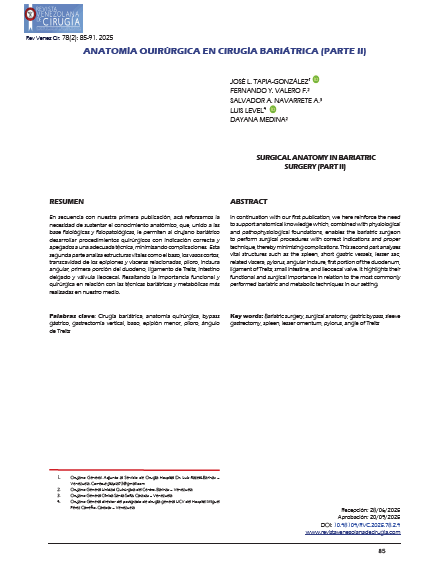Abstract
In continuation with our first publication, we here reinforce the need to support anatomical knowledge which, combined with physiological and pathophysiological foundations, enables the bariatric surgeon to perform surgical procedures with correct indications and proper technique, thereby minimizing complications. This second part analyzes vital structures such as the spleen, short gastric vessels, lesser sac, related viscera, pylorus, angular incisure, first portion of the duodenum, ligament of Treitz, small intestine, and ileocecal valve. It highlights their functional and surgical importance in relation to the most commonly performed bariatric and metabolic techniques in our setting.

This work is licensed under a Creative Commons Attribution-NonCommercial 4.0 International License.
Copyright (c) 2025 REVISTA VENEZOLANA DE CIRUGÍA

